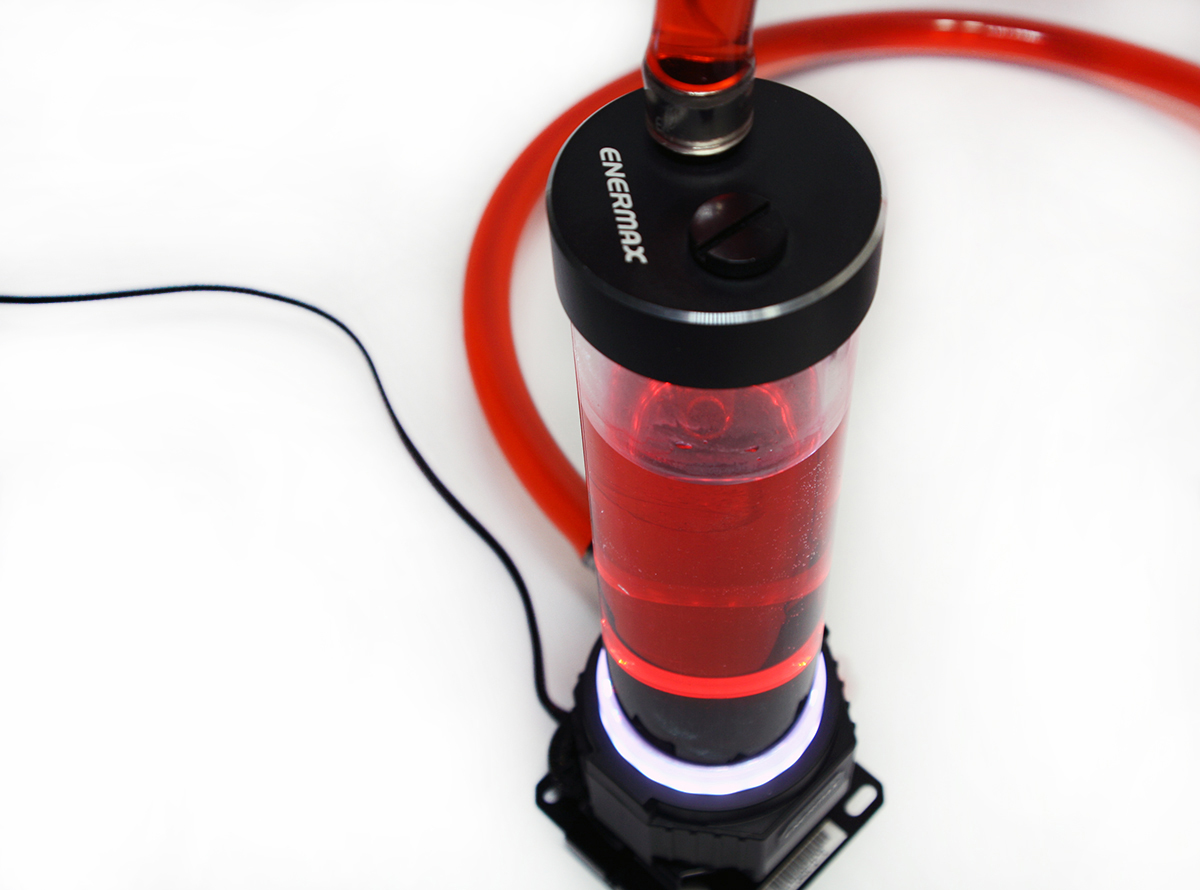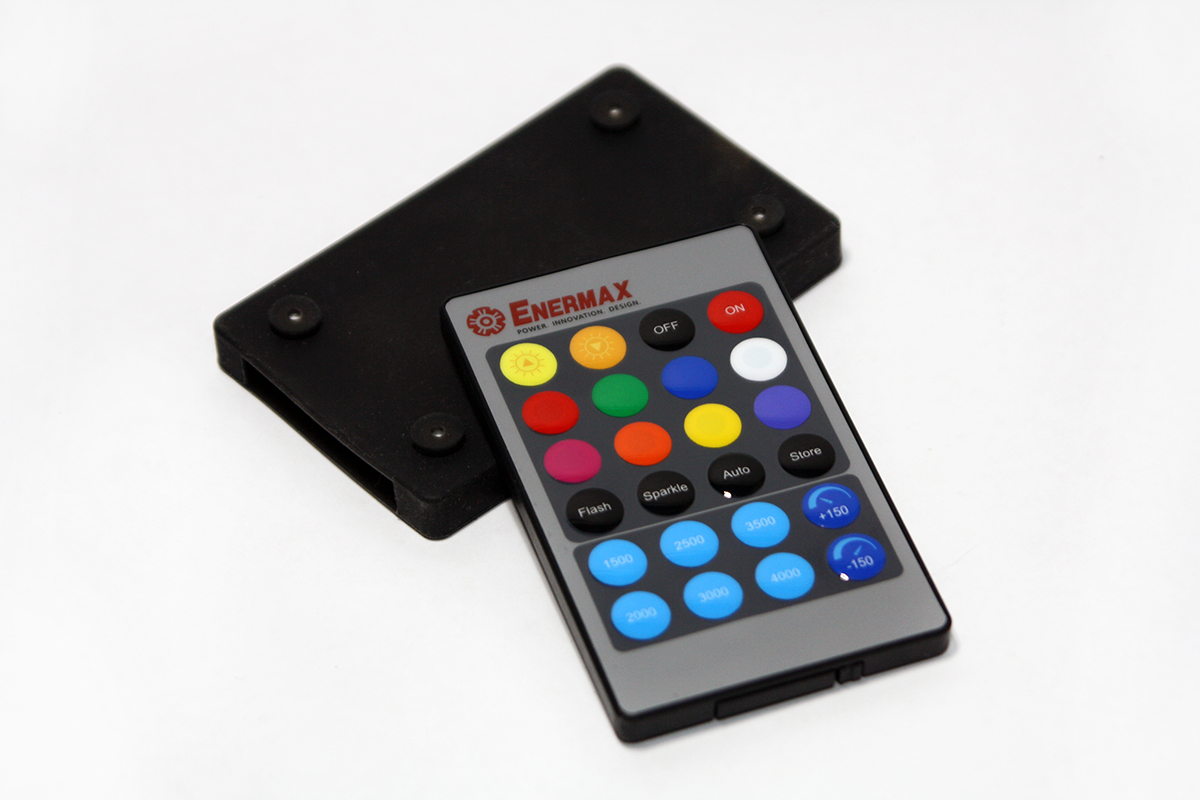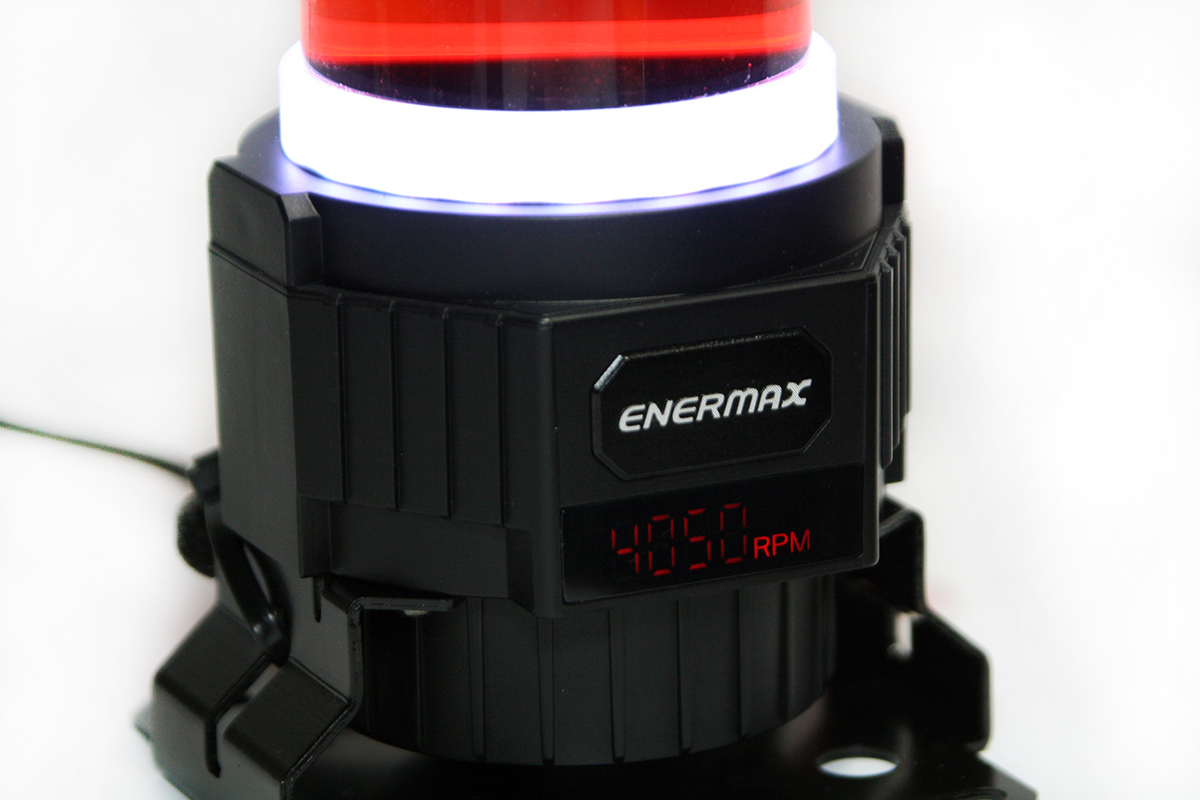Early Verdict
The NEOChanger integrated pump-and-reservoir system offers a lot of great features in a well-defined package at a competitive price. In the market for a performance combo? Consider it.
Pros
- +
Great flow-rate performance
- +
RGB-capable lighting
- +
IR remote for pump speed and color
- +
Competitive price for pump/reservoir combo
- +
Standard G1/4 watercooling fitting sizes
Cons
- -
Pump outlet fittings might prematurely wear the G1/4 threads
Why you can trust Tom's Hardware
When one thinks "custom watercooling," a small subset of manufacturers and vendor names most often come to mind. Enermax is hoping to add its name to that repertoire with bold new components like the NEOChanger RGB pump/reservoir system.
By combining a powerful, high flowing pump with an integrated cylinder reservoir, the need to purchase and configure these components separately leads to fewer decisions to be made in the online shopping cart, while also eliminating the possibility of leaks.
The NEOChanger is available in varieties with 200, 300 and 400ml volume reservoirs. Enermax shipped us the 400ml flagship version for a bit of hands-on review.
The dense, molded-plastic pump housing is permanently mated to the solid, 5.25mm-thick acrylic reservoir tube. An RGB collar around the joint between the pump and reservoir provides the built-in accent lighting for the pump unit, while below the Enermax logo an LED numerical display shows the pump’s operation speed in RPM. Both the accent lighting and pump speed are managed with the included handheld infrared remote.
The pump can be mounted vertically or horizontally by simply changing the default reservoir mounting system with included brackets to meet your needs.
Enermax also included a very handy 24-pin ATX ‘jumper’ tool. When you’re ready to prime and fill the watercooling loop, simply disconnect the 24-pin motherboard ATX power pin and snap on the provided jumper tool to the ATX plug to allow your PC’s power supply to power 12V auxiliary items, such as the Enermax NEOChanger pump, while minimizing damage from any leaks, as most components won’t be powered.
Sheathed in a rubberized silicone cover that contains four small magnets to cling to the outside of a steel computer case for simple access, the handheld IR remote allows control of the pump operating speed by providing single-click RPM control between 1500 and 4000 RPM in 500 RPM increments. If more precise speed control is desired, increments of +/-150 RPM can be selected. Approximately 2.0” (52mm) wide by 3.3” (85mm) in length with a thickness of just over 0.25” (7mm), it is powered by a single CR 2025 watch battery (included) and features lighting on/off switching and dimming, as well as cycling through several color and lighting patterns.
Get Tom's Hardware's best news and in-depth reviews, straight to your inbox.
The pump RGB color scheme can also be synchronized with supported motherboard or other third-party controllers using integrated 4-pin RGB support. Simply disconnect the built-in harness and connect to the RGB color controller of your choosing.
The Enermax NEOChanger pump itself is rated at 900 liters per hour (238 gallons per hour) and utilizes what Enermax calls a "ceramic nano PI bearing," which, like almost all PC watercooling pumps, should absolutely never be run without coolant or water for risk of permanently damaging the pump bearing. The pump lifetime is rated at an MTBF of 100,000 hours, which by comparison is approximately double the rated lifespan of most typical Laing D5 pumps.
The NEOChanger is powered by a single 12V SATA power connection, and all wiring is very nicely sleeved in black nylon braid. The ends of all wiring are also covered in heat-shrink wrapping to prevent fraying.
Enermax utilizes the same pump for each of the 200, 300 and 400ml versions of the NEOChanger unit.
The reservoir cap is milled from aluminum and anodized in black. Two G1/4 fill-ports are placed approximately 0.75” (18.5mm) apart on the cap face and should allow for most large compression fittings to be utilized in tandem. A 3.9” (99mm) acrylic siphon and anti-cyclonic tube can be threaded into the interior of one of the cap ports to assist in reservoir turbulence control, while the 2.18” (55mm) inner, rubber O-ring keeps the cap watertight when threaded down. Enermax also included three G1/4 brass plugs to cap any ports you might not be using.
Our flow-rate performance is conducted by running the pump output through our King Instrument Co. 7530 flow meter in a small closed-loop configuration.
At 100% pump speed, the LED display shows 4080 RPM and provides right at 1.8 gallons per minute (6.81 L/M) while noise levels only registered 36dB at full power.
This chart scales above a D5 Vario and Swiftech MCP50x, both at 100% power, which means the Enermax NEOChanger is moving more water in a mildly unrestricted loop configuration than two highly touted pumps on the custom watercooling market today. These are some impressive flow rate curves, to be certain.
The Enermax NEOChanger pump and reservoir combination starts at $99.99 for the 200ml unit, and runs $119.99 for the 300ml version, up to $129.99 for the 400ml unit, again with the only real difference being the reservoir volume and length of the siphon/anti-cyclonic tube. Performance among all three units should be nearly identical, as reservoir volume does not directly impact cooling performance, but simply allows more liquid volume to be held, although we expect more coolant turbulence in smaller reservoir sizes. Ensuring the reservoir is filled at least to 80% volume capacity should help combat excessive turbulence and cavitation problems.
The only concern we had with the Enermax NEOChanger was with the pump outlet G1/4 fitting threads. While the majority of our hose barbs threaded without much issue, we did notice that fittings with longer threads seemed to bind slightly, and required a bit more force to completely seat the O-rings. Use great care, as the plastic threads could wear or become cross-threaded from multiple fitting installations. Since the reservoir cap is milled and anodized aluminum, this is much less of a concern, but as with any set of watercooling equipment, excessive threading can cause wear.
MORE: Best CPU Cooling
MORE: How To Choose A CPU Cooler
MORE: 20 Clever Liquid-Cooled PC Setups
MORE: All Cooling Content

Garrett Carver is a contributor for Tom’s Hardware, primarily covering thermal compound comparisons and CPU cooling reviews; both air and liquid, including multiple variations of each.
-
DRosencraft I actually bought a couple of these - the 200ml and 300ml versions - several months ago, in lieu of the Thermaltake RGB pumps. The cost on these was just so much better, but I was suspicious of performance and durability, given that Enermax has limited history in the water cooling space. That, and the only other experience I have with Enermax was a 1050W power supply my brother had that went bad after abut a month and a half, and an Enermax LED fan we called "Blinky" because the LEDs blinked when it was running.Reply -
ElectrO_90 Pet peeve - stop using Imperial as a main measurement, when the rest of the world is Metric.... At least put Metric first then Imperial in brackets.... Maybe America will catch up with the rest of the world.Reply -
cryoburner Reply
I disagree. Get rid of the metric measurements entirely, so that the rest of the world has to learn to do the conversions themselves. Perhaps it will help the yardstick industry. : 320867133 said:Pet peeve - stop using Imperial as a main measurement, when the rest of the world is Metric.... At least put Metric first then Imperial in brackets.... Maybe America will catch up with the rest of the world.







